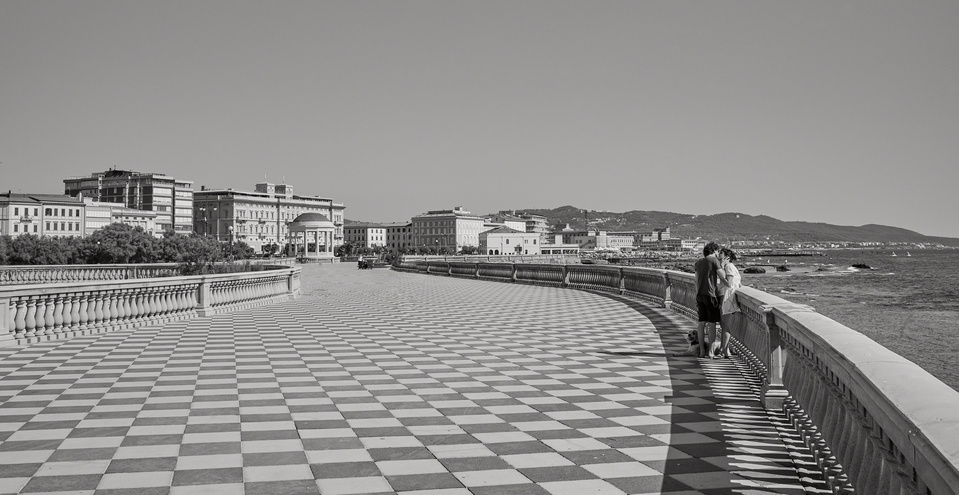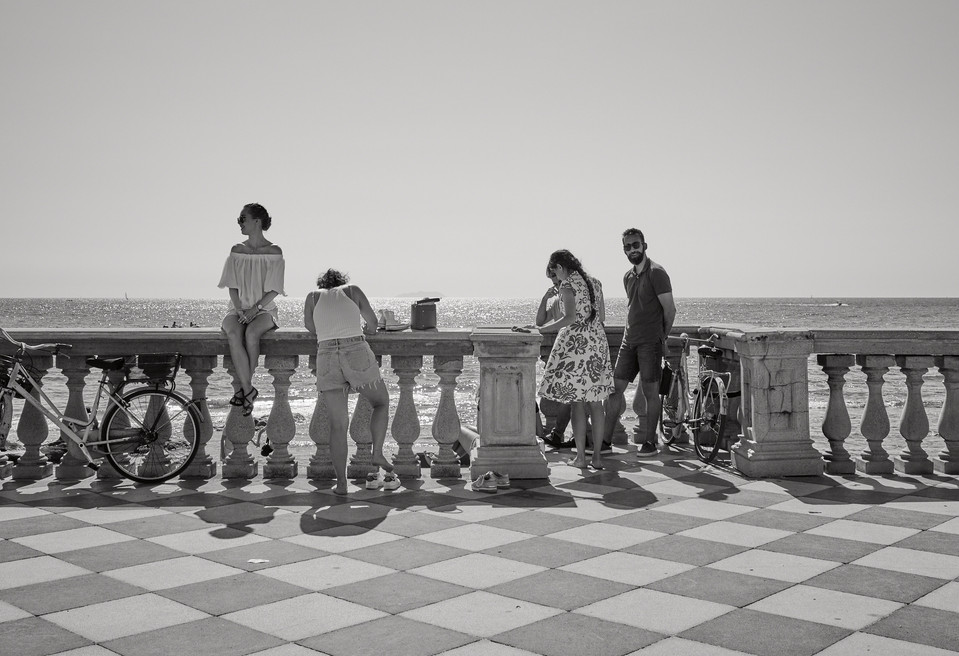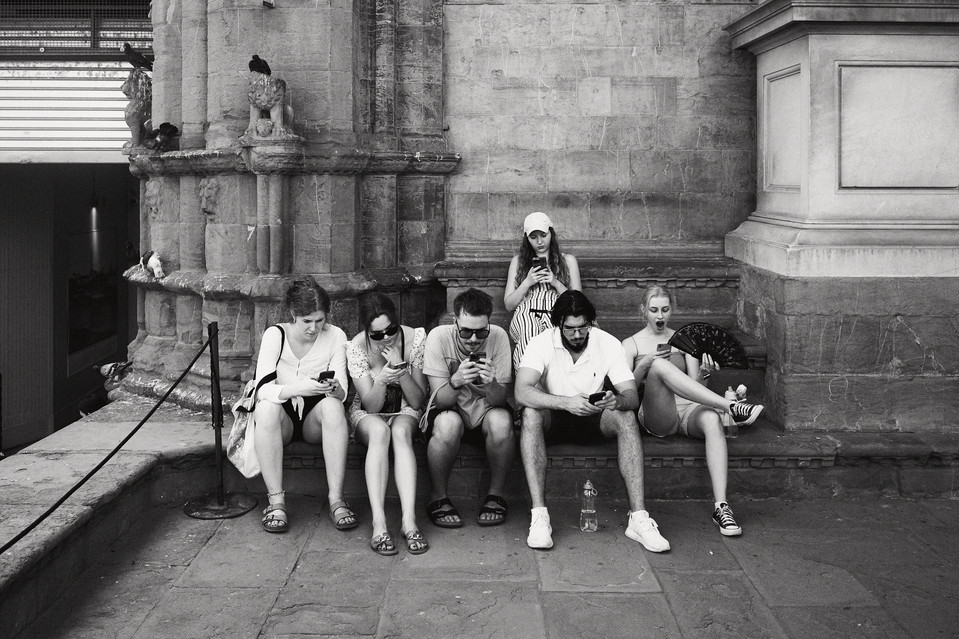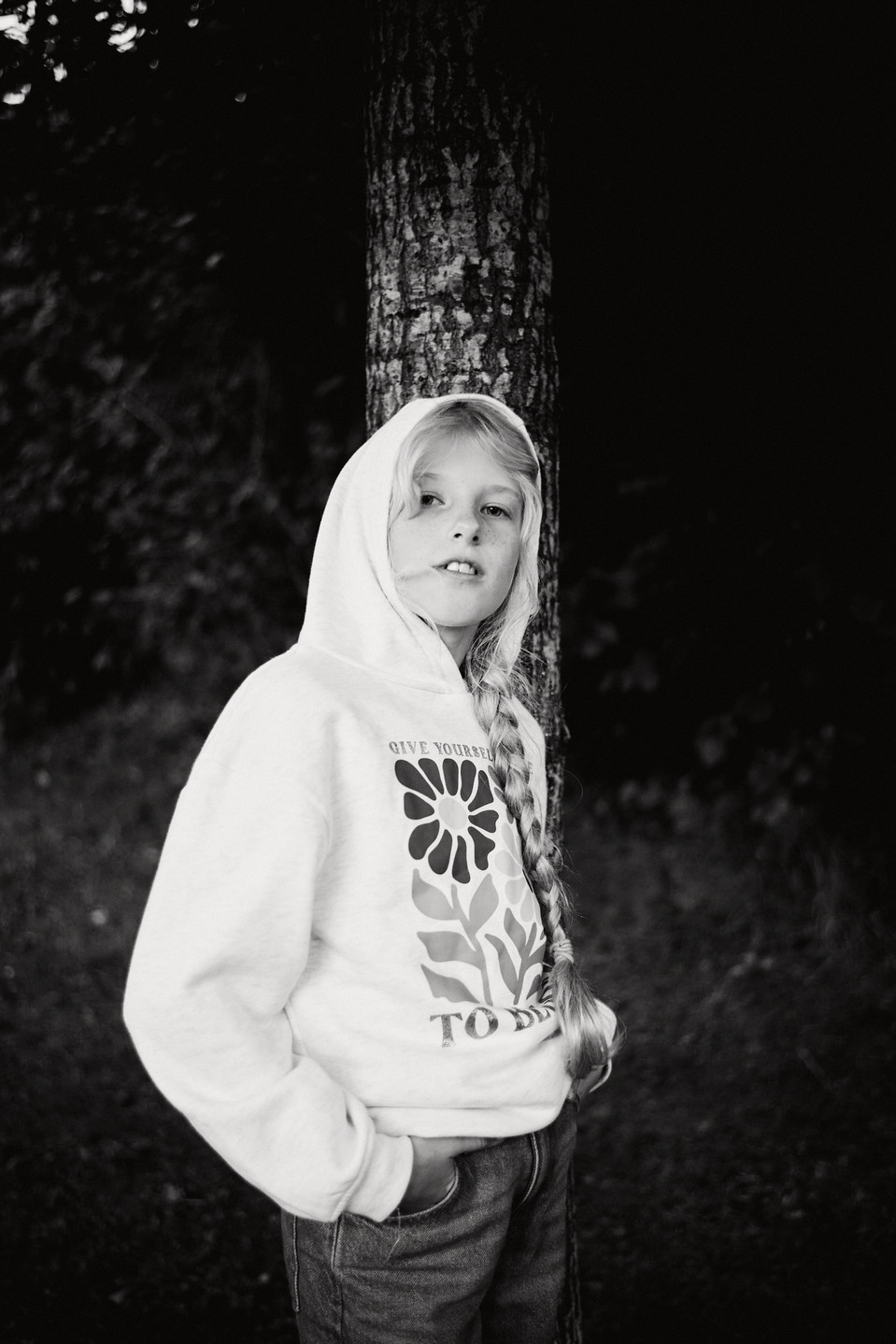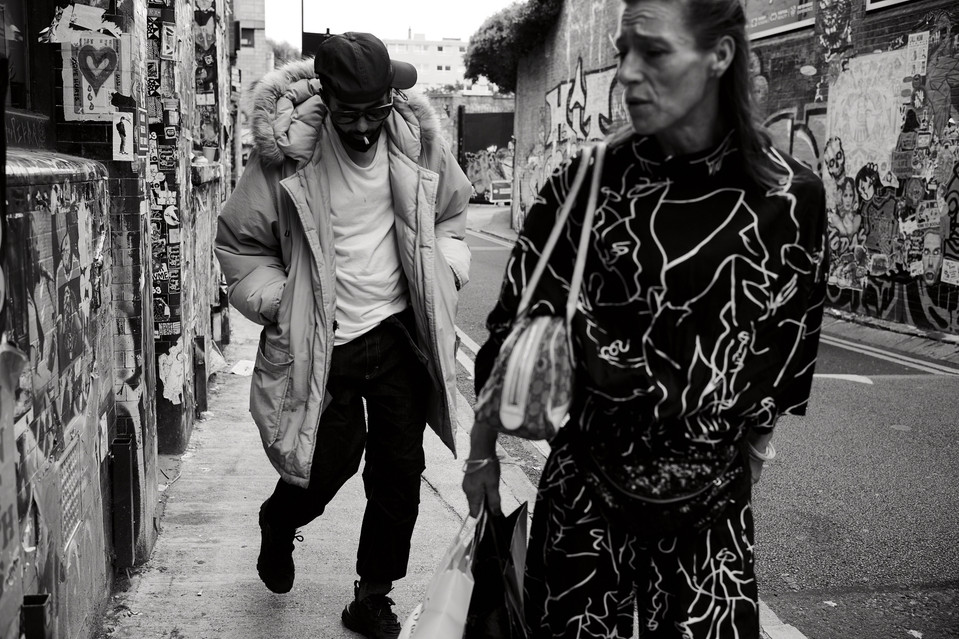Leica M10 | Wedding Photography and Personal Projects
November 19, 2023Roll the intro!
OK, I think I’m ready. I think I’ve arrived at a point where I’m comfortable giving my honest opinion about the Leica M10. Disclaimer first: this is not a tech specs review. Instead, I will discuss my experience with the camera—things I love and things I wish were better.
I’m a lifestyle and wedding photographer primarily, and so my thoughts (and examples) will be based around those areas of reportage. Want a short premise? The camera is great, and I love it, but this cannot be divorced from discussing the experience of using (what I believe is) the best implementation of a range-finder in digital photography today—although I haven’t tried the Pixii camera, which also uses that system, however in an APSC sensor.
Initial experience
For years, I’ve been using Fujifilm X cameras for both my professional and personal work, and I can honestly say that the company has come a long way ever since they introduced their first, and much beloved still, X100 and X-Pro1 line of cameras. There is no hiding from the fact that I’ve been drawn to these because of their nod to the past in terms of the design and functionality: the timeless placement of tactile dials, knobs, and settings—you really do have access to everything you need without diving deep to the menu. Leica is, of course, the other company who prides itself on the classic and photographer-first design approach. This, combined with the choice of materials the cameras are built with (brass/aluminium) and the weight they carry—both metaphorically and literally—truly make you feel that you’re operating a tool of pure intent. I do realise this sounds like the cliché we all heard so many times surfing through countless pages and reviews online, yet it needs to be said. I’ve got a comparison for you though, just to be a bit different, here goes… When I was a young boy, my grandmother owned a Singer sewing machine. I absolutely loved that thing! The turning of the wheel and its dampened movement while the needle would go up and down, and down and up again. The smell of oil she would need to apply onto the parts to keep it smooth, the foot-operated pedal that started the motion, the heavy weight of the parts and their off-colouring of brass. I could spend hours pretending that I’m not only a specialist operator of this astonishing tool, but also a pilot, a racing driver, submarine officer, a radio operator on a bomber, or anyone required to operate specialist machinery to achieve amazing things—my imagination went wild! And inevitably, I get a similar feeling when picking up the Leica M10. It’s all in here too: the dials are reassuringly heavy to use, yet not uncomfortable, the focusing mechanism and the ability to distance yourself from the screen is brilliant. I even love the fact that I don’t need to get to the menu, even more so than on my Fujifilm cameras—something I thought is the ultimate photography-focused approach. And so, to sum up, the quality that went into producing it is remarkable, and I appreciate it every time I pick it up.
The not-so-great (let’s get it out of the way, shall we?)
Having said all that, my initial experience with the camera was very discouraging, as I was very unlucky to receive a copy that came with the focusing arm stuck upon using the rangefinder mechanism. You can imagine my disappointment. I was gutted, and it quickly turned my first photo walk into an online research of the problem, which appears to be not only the case with the M10, but all Leica M cameras. Fortunately, just like with the aforementioned Singer machine, all that is required in such an instance is lubricating the parts and servicing the camera. And so I sent it back and had it fixed in no time. A word of caution though: although this can be done by yourself with some knowledge of parts disassembly and care, you would be invalidating your camera’s warranty and so it’s better to exercise patience and hand it over to someone who knows what they’re doing. In my case, the camera was bought from Aperture London store, whereby their resident Leica technicians handle the gear with care and relevant knowledge. And should the issue return, which has been reported online to have been the case with some copies, you’ll know what to do.
Another minor issue I’ve been experiencing with the Leica M10—again, my copy—is the dust gathering on the sensor. I’m pretty convinced it is the case with my unit mostly. My friend, who’s also an avid Leica M10 shooter and a lifestyle photographer, hasn’t experienced the issue for the past 4 plus years, pretty much ever since he bought his camera. My copy, however, seems to have some dust trapped in the body itself, and it shifts itself, thus resting on the sensor. No biggie here; I know how to clean a camera sensor and have the tools for it. And if I’m too lazy, the tiny spot I’ve got resting in one place on the sensor is easily dealt with in post; my starting point in editing is always setting white balance and automatic dust removal in Capture One, which works great.
Next, a slightly bigger problem may be if you come from another camera system, and one that spoils you with producing files of even dynamic range, though it must be said I mean here ‘right out of the box’. Comparing the Leica M10 DNG files to my Fujifilm RAW output, I instantly see more perceived dynamic range in the latter. The files are great and require less work to get to where I want them to be. With the DNG files from the Leica M10, however, this isn’t the case at all. The files need to be massaged, treated and carefully considered during and after shooting if you want to get the best out of them. For starters, there’s the unforgivable and archaic (by today’s standards) metering system, which produces files where (if you’re not careful) highlights are blown beyond recovery. You just have about a stop of light recovery beyond ISO 400. Oh, and don’t shoot ISO 100, it ain’t pretty. In my early weeks of using the camera, this came somewhat as another disappointment. I persevered though and lead myself with a thought that great images can be produced even with the M8, M240, M9 and the M10, of course. Therefore, decided I’m going to go all-in and meticulously learn my way around it. And I’m glad I did that because boy, oh boy, the results surprise you! Once I applied one, then another method of thinking and utilising what I know about the environment, the light, the camera, and the technique of making, not taking, photographs, I’ve been rewarded with images I cherish and love. What are those methods? Well, for one, shoot either -0.3 or -0.7 underexposed, as this will preserve highlight information (in most scenarios). Two, learn to evaluate the environment, take a step back, do some research or take a light meter with you if you have one (or download a light-meter app like “Lightme”) and start using manual ISO with the light meter mode set to Multifield in-camera. This, so far, has given me the best results, and I’ve been continuously rewarded with the experience of the Leica M10. Just one note here: don’t rely on the LCD screen for preview after your shots, as the images will be underexposed. However, you’ve got all that data ready and waiting for you to salvage on your computer. And there, you will be surprised how far you can go!
And that’s mostly it when it comes to the cons. For some, these may be enough to deter them from spending their hard-earned money and investing it into a camera that doesn’t come without its issues. But then again, hardly anything ever does, and for me, the pros hugely outshine the cons. Let’s have a look at those next.
The jolly good stuff (a point of no return?)
Ahhh, the Leica look, right? Quite possibly (if you’re still here) you’ve been reading through the ramble above just to see it. Well, as cliché as it may be, and without much of a surprise, there _is_ a distinct look to the files produced by the files that come out of the Leica M10. Undoubtedly, when viewing the photos I am always drawn to the warm, yet not overly saturated colours, the texture, and tonality of the scenes (be it tighter portraiture or wider scenes), and the beautiful (micro) contrast that you can arrive at in post. And yes, if sharpness is your thing, the photos produced by the sensor are very sharp, though you need to nail focus to get there—this one’s on You! The magic is definitely there if you’re willing to devote time and effort to learn how to edit the files, too. I only shoot in RAW, and so I won’t have anything to elaborate on here on the JPEG front. When did try it a couple of times, I was positively surprised with the Leica high-contrast monochrome output. In terms of colour JPEGs, I’ve not experimented much due to the aforementioned limits of in-camera metering (not specific to the M10 but to all cameras, mind you).
I would quickly run out of synonyms to describe how great the photos from the camera are. Or perhaps, they are _likely_ to be once you master the art of handling this specialist photographic tool, which I treat it as such. You see, I doubt that this is the camera for you if your’e looking for a point-and-shoot. You’ve heard all the good stuff about it and have deep pockets? Do you think it’ll be an instantly gratifying experience? Think again. You will be disappointed. But hang on, this section was to be about the positives. Let’s circle back to it.
I would package this into the following stages, in short: the handling of the camera, deciding on how to capture the scene (and its traits regarding setting it properly), and finally, editing. This may sound like too much for some folks, but I know where I stand when I say I adore the process of making photos with this system. It really is incomparable to anything else out there, and perhaps it is why Leica are bold enough to charge so much for the _experience_. Don’t get me wrong, I still think their pricing strategy is super crazy. Yet somehow, the madness works for them, and dare I say it, makes sense(?)
The image quality is great, just in case I missed that part. So far, I’ve had a chance to shoot the camera with the Leica Summilux 35mm 1.4 ASPH, Leica Summilux 50mm 1.4 ASPH, Voigtlander 35mm f2 Ultron VM II, Leica Summicron 35mm f2 (V4) and Voigtlander 50mm f2 APO-LANTHAR. Personally, I own only one of the above lenses: the Voigtlander 35mm f2 Ultron VM II and while it is not the best out of them all, it proves to be a wonderful companion to the M10, with its character and peculiar image characteristics. The colours are rendered very well too, and I love what the lens does in monochrome—more on the lens in a dedicated post later, which I’ll link to this blog entry. Standby… Back to image quality.
I was always intrigued by the output Leica M shooters swear by—the infamous _Leica look._ It really beats me to say this (because any camera is a tool and tools are there to do a job) but having shot with Canon, Nikon and Fujifilm systems over the past 10+ years, I haven’t encountered anything that is this good. Well, maybe what comes close is Fujifilm, especially when shot with the new lines of lenses, out of which the Fujifilm 33mm 1.4 R LM WR produces photos with such pop that it’s easy to get confused which system the image came out of. I’m biased, mind you… Going back to the Leica M10; the files are rich, organic and _meaty_—not in their file size but in the ability to push them. I shoot RAW only and, out of the box, the images are flat and almost uninviting. However, upon the very first adjustment, you start to see the magic happen, and you are instantly open to experimenting more with the edits. Dare I say, the files encourage you to continue to massage them to a stage where you initially might have not envisaged arriving at. And I love that about the photographs the Leica M10 produces, as they seem to always reward me with the joy of the process of making photos. For example, when editing raw files from my Fujifilm X system, I very rarely opt for contrast that would exceed +7 value—either by using the Contrast slider or whilst editing with Curves/Levels. With the Leica M10 DNG files, that value is comparable to +35! And even then, the files aren’t _destroyed_by an extensive amount of texture added. To the contrary, as more and more texture is revealed. This gives me so much room to decide on the final look. It takes time though and, depending on who you are, you might or might not enjoy it if you’re looking for a quick and one-click edits.
Using the rangefinder (Do you need autofocus?)
I assume you know what zone focusing is and how it works. If you don’t, please stop here and familiarise yourself with it to understand what I’m referring to. A basic Google or YouTube search will easily get you there. I would argue that for most of the subjects I photograph, I no longer need autofocus. But with varied effects. After devoting time to practice and learn to use a rangefinder and zone focusing, I can comfortably shoot almost entirely without autofocus. Let’s talk weddings, where the main goal is to deliver professional and timeless photographs without compromise. One area I still think it wouldn’t be wise to abandon in-camera tech (subject-tracking autofocus) is when shooting a couple walking, the confetti shots, for example, where I aim for a shallow depth of field with the newly wedded in focus. This, although not impossible, would simply be very difficult to achieve consistently, and at f2 or f1.4. Therefore, I use my trusted and main camera for weddings, the Fujifilm XT-3, which tracks and maintains focus very well. For documenting life on the streets or my kids, travel, portraiture, the material for articles and photo essays, the system is a joy to use! Even with moderately moving subjects, it is possible to achieve great results by predicting distances. You simply do, and it’s enlightening how you forget that a shallow depth of field and sharpness take the back seat—you focus on the scene and the moment more, and without thinking about it! You even get to embrace motion and blur. That is not to say I abandon shallow depth of field and sharpness, not at all! I am simply more selective when it comes to those elements and perceive the scenes through a different set of spectacles. I wish I could be more clear on this, but I really think that the bottom line is: by having so much tech assisting us, we forget about the process occasionally. We get spoilt. Exception: nature and sports photography at the highest end. Yeah, you need that tech! I hear you! I agree. I haven’t had the experience with earlier iterations of the M-system and so I can’t compare the focusing patch and the optical viewfinder with those. What I can say is that the one found on the Leica M10 is a joy to use. The patches are clear, and it’s fantastic to be able to see the composition whilst looking at the ‘real world’, and not through an EVF—there, another cliché. Using hyperlocal distance (zone focusing) has been a learning curve but a pleasant one at that. I very quickly stopped over-thinking manual focusing and relied on muscle and brain memory to evaluate where I am against the subjects. It simply works, but you need to be prepared to put the effort in it. The rewards are there!
Who, where and when (should look at the Leica M10)?
Who shouldn’t? Well, it’s quite simple, actually. If you think that the M system is too expensive for what it offers—and you’re right, by the way—then it’s not for you. You will get frustrated if you’re used to modern, in-camera technology that always has your back, be it low light, motion, speed-capture. One of those? Don’t do it! You also shouldn’t buy this camera if you’ve heard it sang so many times that ‘_this makes me a better photographer, slows me down, blah, blah, blah’—in my opinion, that’s clickbait at this stage. _Don’t listen to them. Please. If your craft is not_ there yet_, then consider opting for a system that will limit you technically but not financially, and you’ll achieve the same result. Opt for film even, as by developing four rolls of film per month, say, you’ll be paying what you’d be seeing gone off your bank account for a Leica M for the next four years (min. depending on the model and price vs the number of rolls you shoot and develop). But know what? You’ll learn more by the former and by shooting less you will be more selective, concise, pre-determined, and you will love your photos more! More importantly, you will not limit your experiences, which matter more. Instead, invest in travel, explore your local areas, the people you haven’t met, things you haven’t tried… Anything, but please don’t spend all that money on a tool that you think will ensure you’ll get better photos. It really isn’t true. Oh, and then you’ll want lenses, accessories, batteries. Down the rabbit hole…
So, who should? Well, I would argue that there is a crowd of purists, established photographers who would not only benefit from experiencing the M system, but also enjoy it tremendously and expand their photographic skills. If you know your craft and are tired of using a camera loaded with tech so much it feels like a computer, if you’re after a digital solution that pays homage to the past masters of diligently creating images (albeit at the expense of time and money), then the M is for you. If you can afford it, or if you can justify the expense because you rely on a camera as a tool to generate profit, then the Leica M is for you. Or perhaps if you love, live and breathe photography, like a crazy petrol-head longing to own a classic car, and you want to satisfy the itch, and create photographs through a specific and goal-oriented processes, then the M is for you.
Additionally, Leica do not update their cameras every year and so there is an element of continued dedication, both from the company and the client, to continue and master operating one of the most enjoyable photographic tools out there—I appreciate that approach a lot.
I’m excited to continue using the Leica M10 both professionally and for personal work. It breathes fresh air to my creative endeavours while creating images, sticking to the past methods of photography. And the end-result is always a highly rewarding photograph I cherish because time and effort was taken to create it.
If you got this far and have any questions, and you’d like to continue the conversation about the Leica M system, drop me a line here, and we’ll take it from there.
Thanks for reading!
Mike
Wedding Photographer, Market Harborough, Leicestershire (and beyond)
My recommended all things Leica store in London: Aperture UK



















